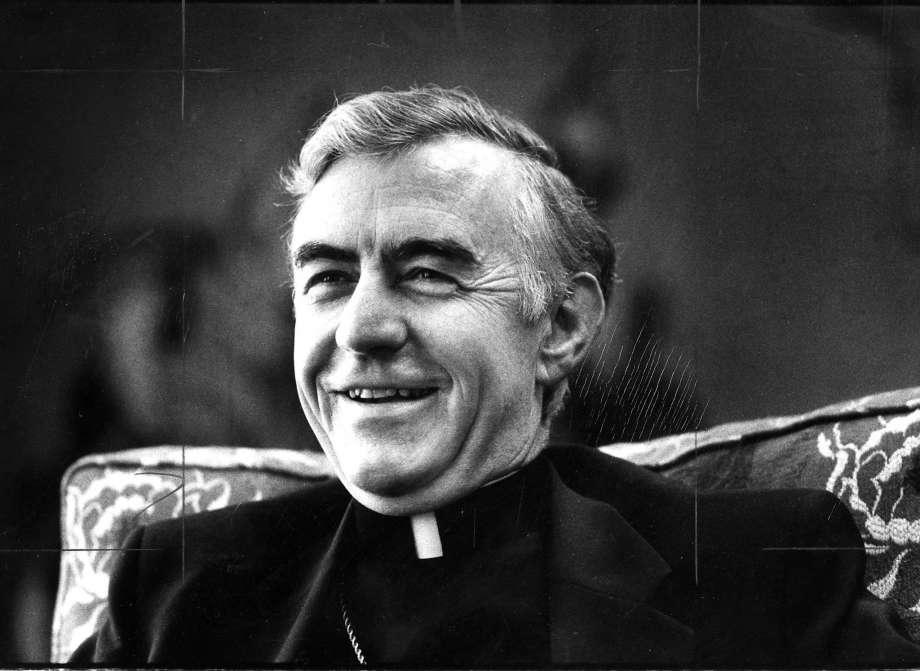|
Archbishop John R. Quinn, Catholic progressive, dies in S.F.
By Carl Nolte
[with video] John R. Quinn, archbishop emeritus of San Francisco and a former president of the National Conference of Catholic Bishops, died early Thursday after a long illness. Archbishop Quinn, who was an advocate of interfaith cooperation, died at the Jewish Home of San Francisco after a long hospital stay. He was 88. He served as archbishop of San Francisco from 1977 to 1995, and had built a reputation as an advocate of social justice and a leader in the liberalization of the Catholic Church. In his retirement, he lectured and wrote two books on reform of the papacy and was working on a third when he died. Archbishop Quinn had become ill during a visit to Rome last fall and had emergency surgery. However, complications set in, and, upon his return to San Francisco, he spent several months at St. Mary’s Hospital. He had been moved to the Jewish home to receive skilled nursing care last Friday. “He stated several times since his move that he had achieved his goal of leaving the hospital for a new home where he could enjoy the fresh air, trees, and sounds of birds in the early morning,” Archbishop Salvatore Cordileone said in a statement. However, Archbishop Quinn’s breathing became labored Thursday morning and he died soon after. “Our hearts are breaking at losing such a great priest and friend,” Cordileone said. Archbishop Quinn had a considerable reputation in church circles as a reformer in the Catholic Church. He was “the figure who enshrined the progressive style of Catholicism to fit the nation’s most liberal city,” wrote Rocco Palmo, an influential observer of Catholic affairs on social media. “Archbishop Quinn spoke out with a clear, powerful voice on the central issues of the day,” Jeffrey Burns, a former archivist for the San Francisco Archdiocese, wrote in an article on Archbishop Quinn’s 80th birthday. “Truly, he was an archbishop with the heart of a deacon.” John Rafael Quinn was born in Riverside on March 28, 1929. After graduation from high school, he entered the seminary in El Cajon (San Diego County) and studied later at the North American College in Rome. He was ordained in Rome in 1953. He served in parish posts and taught in a seminary. In 1964, Archbishop Quinn was appointed provost of the University of San Diego College for Men and soon engineered a merger with the school’s women’s college to create the University of San Diego. In October 1967, at age 38, he was named auxiliary bishop of San Diego. He was the youngest Catholic bishop in the U.S. and was clearly marked for higher posts. In November, 1971 Pope Paul VI named him bishop of Oklahoma City and Tulsa. Two years later, the position was raised in status and he became archbishop of Oklahoma City. In February 1977, he succeeded Joseph McGucken as the sixth archbishop of San Francisco. Eight months later, he was elected president of the National Conference of Catholic Bishops. In San Francisco, he presided over the creation of the Diocese of San Jose. He also received important assignments from Rome, including pontifical delegate for religious life in the United States. Archbishop Quinn was often called to Rome to mediate disputes between the Vatican and the American church. These roles gave him a forum for his positions on progressive reform in the church. He found his assignment in San Francisco challenging. In the past, the role of archbishop had been a powerful one, but the city had become much more ethnically diverse. There were fewer families, a large gay population and a fiercely liberal set of values. “This is a different city in a lot of ways,” he said in an interview. “There are also immense social problems.” One of them was the AIDs epidemic and Archbishop Quinn took a leading role through Catholic Charities in providing help to AIDS patients during the height of the crisis. When Pope John Paul II visited San Francisco, he met with several AIDS patients, including a young boy and two members of the clergy. Archbishop Quinn was a critic of U.S. policy toward Central America and refugees from that area. He made two parishes — St. Teresa in San Francisco and St. Bruno in San Bruno — sanctuary parishes. But his administration had its problems, including an emerging sex scandal involving the clergy and an abrupt decline in church attendance. He also received considerable criticism when he ordered several churches closed, most notably St. Brigid in San Francisco. NEW; Archbishop Quinn found the stresses of his office painful, and took an unprecedented leave of abasence for nearly a year. He resigned as Archbishop in December 1995. He was 68 years old; in effect it was early retirement. However, he continued to lecture, teach and write. His 1999 book, “The Reform of the Papacy: The Costly Call to Christian Unity,” received a Catholic Press award. A second book, “Ever Ancient, Ever New: New Structure of the Communion in the Church,” came out in 2012. At the time of his death, Archbishop Quinn was working on a book about the First Vatican Council of 1870. Funeral services are pending. Contact: cnolte@sfchronicle.com
|
.
Any original material on these pages is copyright © BishopAccountability.org 2004. Reproduce freely with attribution.
